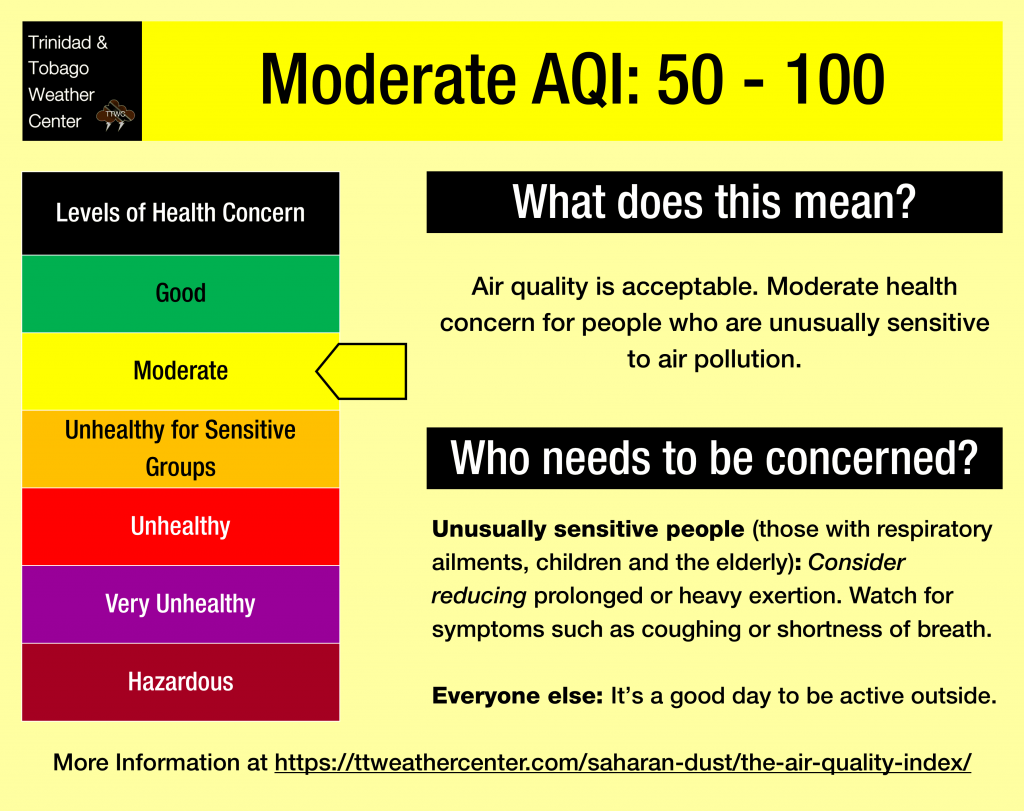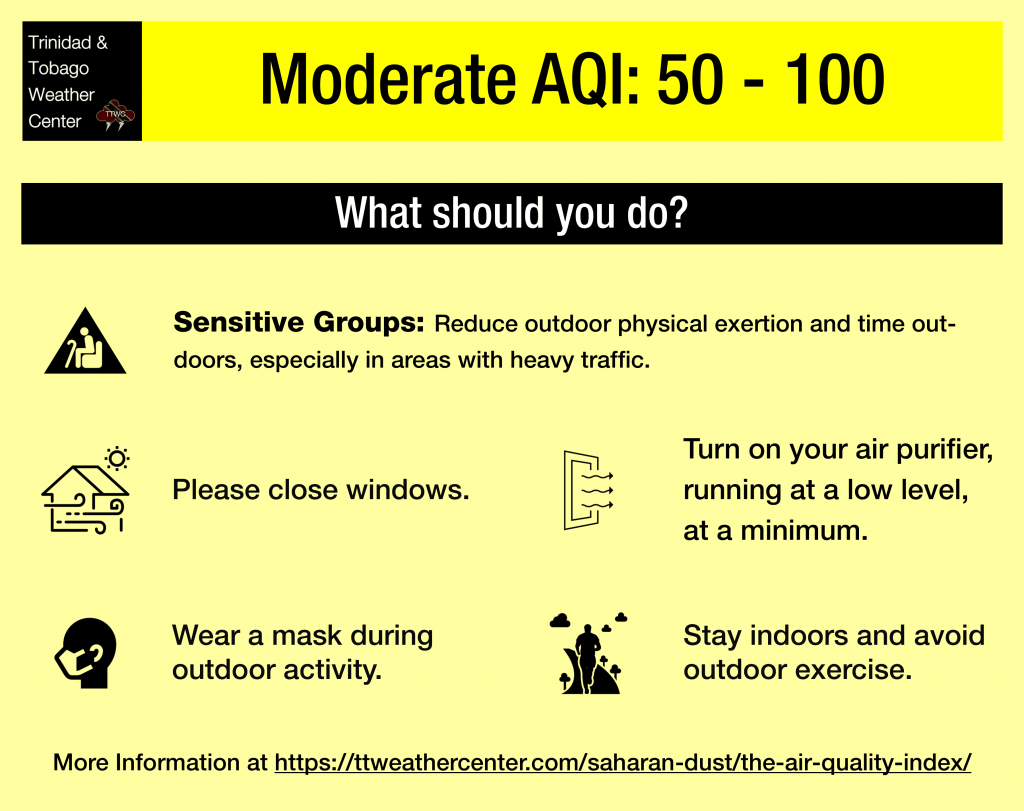A moderate to high-concentration surge of Saharan Dust is forecast to move in from late Thursday, with peak concentrations likely from Friday afternoon through Saturday midday. Periodic surges in dust are forecast to trail tropical waves in the Atlantic, typical for this time of year.
What you need to know
— Saharan Dust Surges: Concentrations are currently decreasing across T&T as Invest 96L (Tropical Wave 17) moves across the Windwards, with the next dust surge arriving on Thursday, July 4th, with concentrations forecast to be moderate to high. Another moderate to high dust surge is forecast to move in by mid-Monday, July 8th, and dust levels are forecast to remain elevated through mid-July.
— Impacts: Air quality is forecast to remain moderate throughout the forecast period, occasionally reaching unhealthy levels for sensitive groups, particularly on Friday through Saturday this week.
— What Should You Do: In times of unhealthy air quality, everyone should take the necessary precautions. Throughout the forecast period, sensitive groups are advised to take the necessary precautions, particularly during high traffic and in the vicinity of fires.
Current AQI Levels Across T&T
As of 7:00 AM Wednesday, July 3rd, 2024, the official air quality monitoring stations from the Environmental Management Agency (EMA) at Arima, Point Lisas, Toco, and San Fernando all report good air quality, while at Signal Hill and Beetham, no data is currently being transmitted.
Unofficial air quality monitoring stations at Longdenville, St. Augustine, and Woodbrook are reporting good air quality.
These measurements are based on PM2.5 (particulates the size of 2.5 micrometers and smaller, usually associated with increases in Saharan Dust, vehicle exhaust, and smoke) and PM10 particulates.
Over the last 24 hours, visibility has remained at 10 kilometers at the A.N.R. Robinson International Airport at Crown Point, Tobago, and at the Piarco International Airport, Trinidad, outside of rainfall activity.
Saharan Dust Forecast

Now through early Thursday (July 4th): Decreasing Saharan Dust levels due to the passage of Invest 96L (Tropical Wave 17) north of T&T, with an increase in dust levels trailing. Mostly good air quality.
Thursday (July 4th) through Saturday (July 13th): Moderate to high concentrations of Saharan Dust across both islands, with generally moderate air quality, occasionally reaching levels that are unhealthy for sensitive groups during peak concentrations from Friday midday (July 5th) through Saturday midday (July 6th). Another reinforcing surge of Saharan Dust is likely from late July 7th into early July 8th, following the passage of Tropical Wave 18 across the region.
What does this mean for you?
Elevated concentrations of Saharan Dust periodically over the next seven to ten days are likely to bring air quality to moderate levels, chiefly affecting the most sensitive groups of the population. No action is required from the general public.


We’re in a period where the Intertropical Convergence Zone, tropical waves, and occasional tropical cyclones may shield Trinidad and Tobago from the Saharan Dust events. While tropical waves are notable in moving dust across the Atlantic and the Eastern Caribbean, these periodic tropical waves also improve air quality.
The concentration of the dust that follows the wave depends on its strength as it moves off the West African Coast. This is because of stronger thunderstorms across Central Africa. As strong winds move downward and outward from these thunderstorms, the wind kicks up dust as it moves across parts of the Saharan Desert and transports it into the upper atmosphere. This “plume” of dust follows the axis of the wave as it progresses westward into the Atlantic.
Dust that makes it into the upper levels of the atmosphere can then get transported across the Atlantic Ocean. The plumes of dust eventually affect the Eastern Caribbean.
Larger, more concentrated plumes of Saharan dust begin in April and continue through November.











